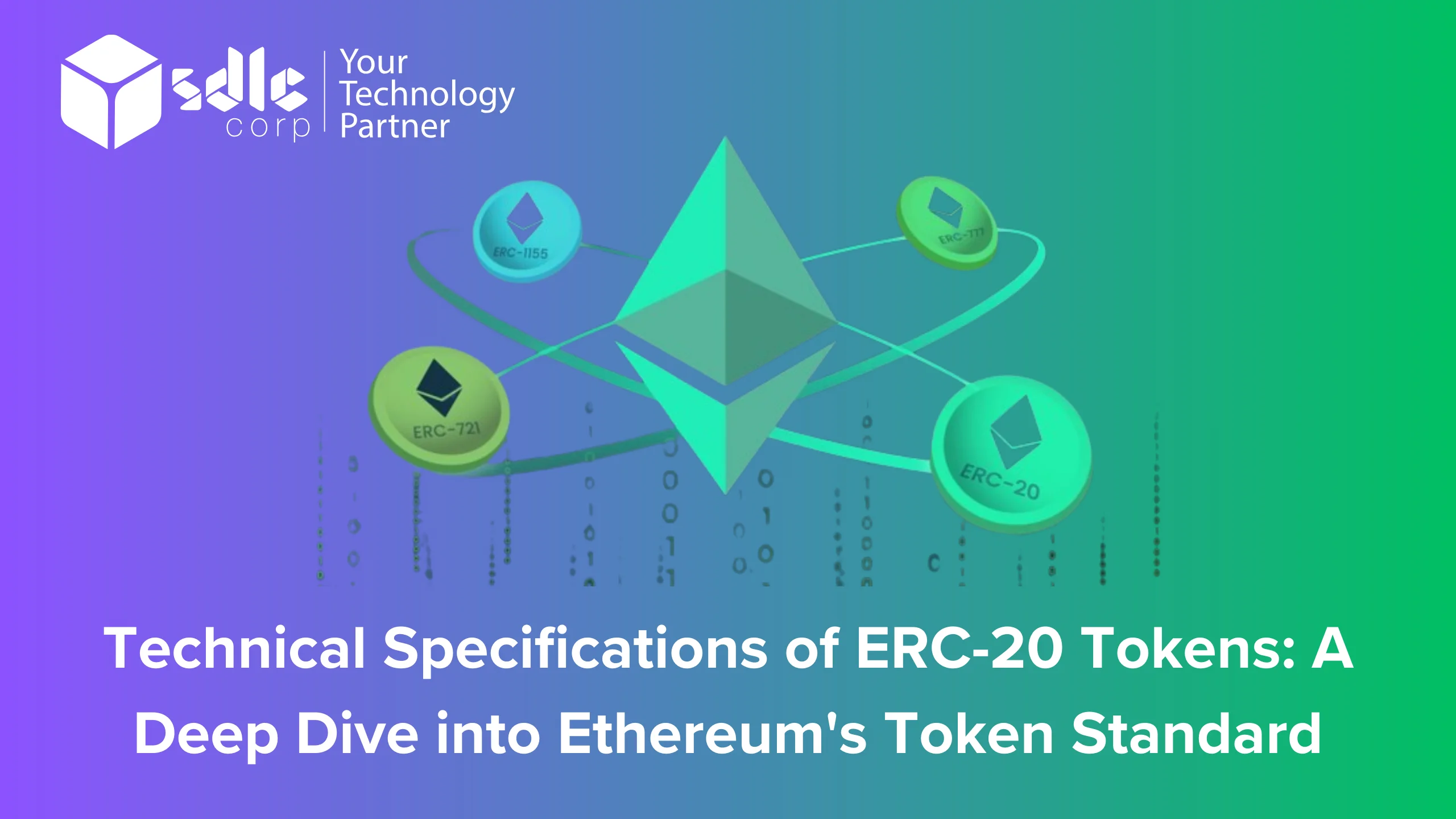Introduction
In the evolving blockchain technology landscape, the ERC-20 token standard stands as a foundational protocol within the Ethereum ecosystem. Designed to establish consistency and operational reliability across digital tokens, ERC-20 has emerged as a symbol of efficiency and seamless compatibility. This article delves into the technical specifications that define ERC-20 tokens, offering an in-depth exploration essential for developers and blockchain enthusiasts involved in Ethereum-based projects. Understanding these specifications, including how to create an ERC-20 token, is crucial for leveraging ERC-20’s capabilities to create, manage, and integrate tokens effectively across decentralized applications and financial systems.
Fundamental Properties of ERC-20 Tokens
At its core, the ERC-20 standard delineates a comprehensive set of mandatory and optional properties and methods that dictate how tokens operate within the Ethereum network. These specifications are executed through smart contracts deployed on the Ethereum blockchain, primarily written in Solidity, Ethereum’s native programming language. These smart contracts define crucial aspects such as token balance queries, transfers of tokens between addresses, and approval mechanisms for delegated token management.
By adhering to these standardized rules, ERC-20 tokens ensure interoperability and uniformity across diverse applications, enabling seamless integration into decentralized exchanges, wallets, and other blockchain-based platforms. Understanding these technical foundations is essential for developers to implement and utilize ERC-20 tokens in their projects effectively.
Mandatory Methods and Properties:
- TotalSupply: This property returns the total number of tokens that exist in circulation.
- Balance: This function takes an Ethereum address as an argument and returns the number of tokens that the address holds.
- Transfer: Allows a token holder to transfer tokens to another Ethereum address. It is crucial for enabling transactions within the network.
- TransferFrom: Facilitates the transfer of tokens from one address to another on behalf of the token holder. This is particularly useful in scenarios involving third-party applications or contracts.
- Approve : Grants permission to another address to withdraw a specific amount of tokens from the sender’s account, up to a certain limit.
- Allowance: Returns the remaining number of tokens that a spender is allowed to withdraw from an owner’s account.

Optional Methods and Properties:
- name: A string that represents the name of the token; for example, “Ether” for ETH.
- symbol: A shorter version or abbreviation of the token name; e.g., “ETH”.
- decimals: Defines the number of decimals that the token can be divided into, facilitating transactions of fractional tokens. Typically, this is set to 18, mirroring the divisibility of ether.
Event Notifications
ERC-20 includes event notification protocols that alert the network about specific actions taken by token contracts:
- Transfer: Triggered when tokens are transferred, including zero-value transfers that can be used to trigger a notification.
- Approval: Emitted when approve is called successfully, indicating that an allowance for a spender by the token owner has been set or changed.
Practical Implementation: Code Example
Below is a simplified Solidity code snippet that illustrates a basic implementation of an ERC-20 token:
pragma solidity ^0.8.0;
contract TokenERC20 {
string public name = "SampleToken";
string public symbol = "SMP";
uint8 public decimals = 18;
uint256 public totalSupply;
mapping(address => uint) public balanceOf;
mapping(address => mapping(address => uint)) public allowance;
event Transfer(address indexed from, address indexed to, uint value);
event Approval(address indexed owner, address indexed spender, uint value);
constructor(uint256 initialSupply) {
totalSupply = initialSupply * 10 ** uint256(decimals);
balanceOf[msg.sender] = totalSupply;
emit Transfer(address(0), msg.sender, totalSupply);
}
function transfer(address _to, uint _value) public returns (bool success) {
require(balanceOf[msg.sender] >= _value);
balanceOf[msg.sender] -= _value;
balanceOf[_to] += _value;
emit Transfer(msg.sender, _to, _value);
return true;
}
function approve(address _spender, uint _value) public returns (bool success) {
allowance[msg.sender][_spender] = _value;
emit Approval(msg.sender, _spender, _value);
return true;
}
function transferFrom(address _from, address _to, uint _value) public returns (bool success) {
require(_value <= balanceOf[_from]);
require(_value <= allowance[_from][msg.sender]);
balanceOf[_from] -= _value;
balanceOf[_to] += _value;
allowance[_from][msg.sender] -= _value;
emit Transfer(_from, _to, _value);
return true;
}
}
Conclusion
The technical specifications of ERC-20 tokens provide a robust framework for developing and deploying digital assets on the Ethereum blockchain. ERC-20 facilitates a vast ecosystem of interoperable applications by standardizing interactions and ensuring compatibility. As blockchain technology advances, the principles embodied in the ERC-20 standard will continue to influence new developments, reinforcing Ethereum’s position as a leading platform for innovation in the decentralized world. Understanding use cases of ERC-721 tokens further expands the scope of blockchain applications, particularly in areas involving unique asset tokenization like digital art, collectibles, and gaming assets.
Invest in Ethereum's Premier Token Standard

















